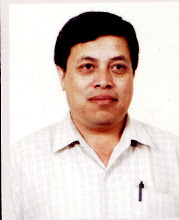Himalayan White House Int’l College
Grade XII
Model Question 2066 set I
Section A Zoology
1. Give very short answers of following questions any seven 1x7=7
1.1. From where does epithelial cell rise?
1.2. Which vitamin is called antisterility vitamin?
1.3. What is breathing rate in man?
1.4. What do you mean by double circulation?
1.5. Why is urine yellow in colour?
1.6. Which cranial nerve is mixed nerve?
1.7. What do the leydig cells secrete?
1.8. How is urea formed in liver?
1.9. What are psychedelic drugs?
1.10. What is in-vitro fertilization?
2. Give sort answers of following questions any five 3x5=15
2.1. Write how is CO2 transported?
2.2. Discuss benefits of genetic engineering.
2.3. Describe haversian canal system
2.4. How does liver act as a homeostatic organ? Discuss.
2.5. Name the hormones produced by adrenal gland and state their
functions.
2.6. Enumerate the problems of population explosion.
2.7. Describe the structure of frog’s gastrula.
3. Give an account of human heart suitable diagram 7.5
OR
Describe human excretory system with necessary diagrams.
4. What are communicable diseases? Discuss the causative agent, symptoms and control major of any one disease you have studied? 8
Section B Botany
1. Give very short answers of following questions any seven 1x7=7
1.1. What is central dogma?
1.2. Define polyploidy.
1.3. How is xylem arrange in dicot and monocot stem?
1.4. Give two examples of main C4- plants
1.5. What is triple fusion?
1.6. Define variation?
1.7. What is osmosis?
1.8. Define the term tissue culture
1.9. Name the hormone responsible for leaf and fruit fall.
1.10. Name dead tissue of the plant body.
2. Give sort answers of following questions any five 3x5=15
2.1. Explain Mendel’s principle of dominance.
2.2. Differentiate between clone and offspring.
2.3. Describe the embryogeny of dicot embryo with necessary deagram.
2.4. What is photosphorylation? Differentiate cyclic photophorylation with non-cyclic photophorylation.
2.5. Mention the importance of tissue culture technology.
2.6. Mention the functions of gibberlins.
2.7. Describe the importance of sterilization in plant tissue culture
3. Describe anatomical features of monocot stem with well labeled diagram. 7.5
OR
Describe light independent steps of photosynthesis and also mention its relation with the light phase.
4. Describe the mechanism of replication of DNA in the eukaryotic cell. 8
Himalayan White House Int’l College
Grade XII
Model Question 2066 set II
Section A Zoology
1. Give very short answers of following questions any seven 1x7=7
1.1. What is the average weight of human brain?
1.2. What is organ of corti?
1.3. What is micturition?
1.4. What is autograft?
1.5. What is the function of Leydig cells?
1.6. Give the function of carbonic anhydrase.
1.7. Name the hormone that regulates water absorption.
1.8. What are drug addiction?
1.9. Name the hormones secreted by ovary.
1.10. What is Rh factor?
2. Give sort answers of following questions any five 3x5=15
2.1. Write a note on Haversian canal system.
2.2. Mention the applications of biotechnology
2.3. Write the procedure of amniocentesis.
2.4. What are the differences between parasympathetic and sympathetic nerves?
2.5. Discuss the histological structure of human pancreas.
2.6 . Explain briefly when exactly the two heart sounds are produced. Name the instrument used to hear these sounds.
2.7. Why the transplanted organs rejected & what are are the means to prevent rejection?
2. Describe the development of frog from the zygote up to the formation of coelom. 7.5
3. Describe the causative agent, symptoms and preventive measures of the non-Communicable disease.
OR
Describe the human brain with suitable diagram. 8
Section B Botany
1. Give very short answers of following questions any seven 1x7=7
1.1. What do you know about operon?
1.2. Write two important methods of vegetative propagation.
1.3. How does photophoshorylation differ from oxidative phosphorylation?
1.4. Mention the role of yeast in fermentation process.
1.5. Write down the complementary RNA sequence of the DNA segment AATTAACCGA.
1.6. List two major application of tissue culture technique.
1.7. Name two plants used as bio-fertilizers.
1.8. Give the structure of ethylene.
1.9. What is a genetic code?
1.10. Write one important difference between dicot stem and monocot stem
2. Give sort answers of following questions any five 3x5=15
2.1. Write down the experiment to demonstrate unequal transpiration from two surfaces of dorsiventral leaf.
2.2. Give an account of micro-mutation.
2.3. Describe in brief the criss cross inheritance.
2.4. What are objectives of plant breeding?
2.5. Discuss physiological effects of auxins on the plant body.
2.6. Describe principle of fermentation technology with example.
2.7. Write six differences between dicot and monocot root.
3. Draw a well-labeled diagram of T.S. of dicot root. Discuss how it differs from that of a monocot. 7.5
OR
What is respiration? Explain the process of glycolysis in plants.
4. Discuss the mechanism of DNA-replication. 8
Subscribe to:
Post Comments (Atom)

No comments:
Post a Comment